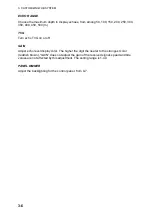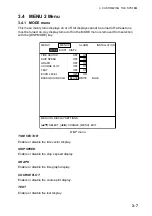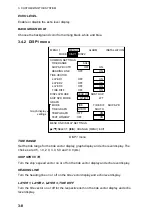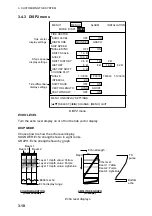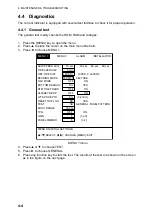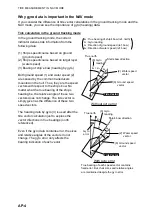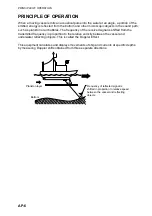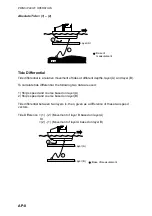
4-1
4.
MAINTENANCE &
TROUBLESHOOTING
Periodic checks and maintenance are important for maintaining performance. This chapter
contains maintenance and troubleshooting instructions to be followed to obtain optimum
performance and the longest possible life of the equipment. Before attempting any
maintenance or troubleshooting procedure, please review the safety information below.
WARNING
ELECTRICAL SHOCK HAZARD
Do not open the equipment.
Only qualified personnel
should work inside the
equipment.
4.1 Routine
Maintenance
General checks
Check the following monthly.
•
Check all cabling. If damaged, replace.
•
Check connectors on each unit for tight connection. Retighten if necessary.
•
Check the ground on each unit. If rusted or dirty, clean.
•
Measure the input voltage to be sure it is within the rated voltage.
Cleaning
Dust or dirt should be removed from exterior surfaces with a soft, dry cloth. For cleaning the
LCD, wipe it carefully to prevent scratching, using tissue paper and an LCD cleaner. To
remove stubborn dirt, use an LCD cleaner, wiping slowly with tissue paper so as to dissolve
the dirt. Change paper frequently so the dirt will not scratch the LCD. Do not use
chemical-based cleaners to clean the
monitor
unit – they can remove paint and markings.
Transducer
•
Check the zinc plate attached to the transducer for corrosion regularly and replace it if it is
corroded. It should be replaced when the ship is drydocked. If the plate is not replaced,
corrosion may occur. This may allow the transducer to fall out from the hull, allowing
water to leak inside the vessel.
•
Do not paint the transducer face.
•
When the vessel is drydocked, remove marine growth from the transducer. Marine life
adhering to the transducer may cause a considerable drop in performance.
Summary of Contents for CI-68
Page 1: ...DOPPLER SONAR CURRENT INDICATOR CI 68 ...
Page 10: ......




